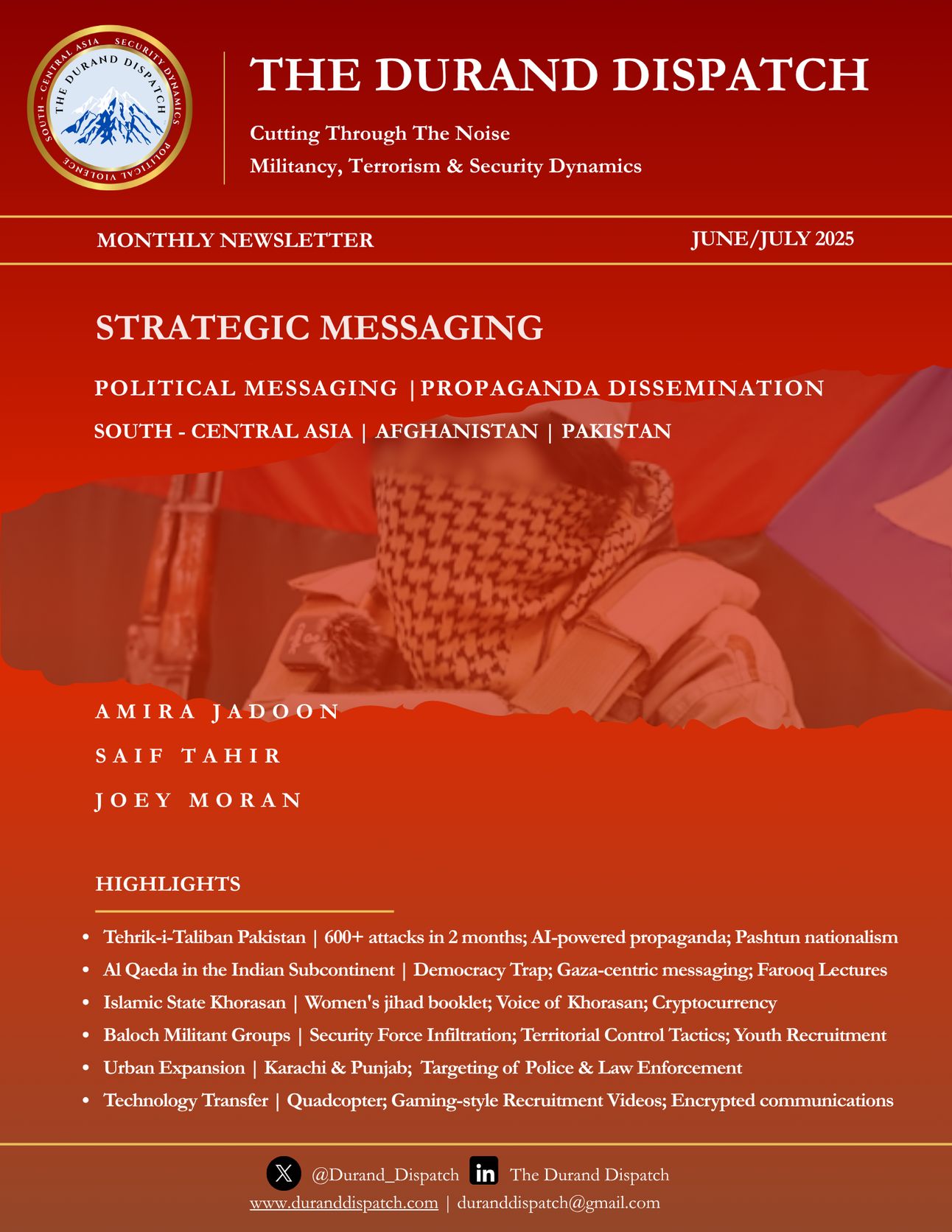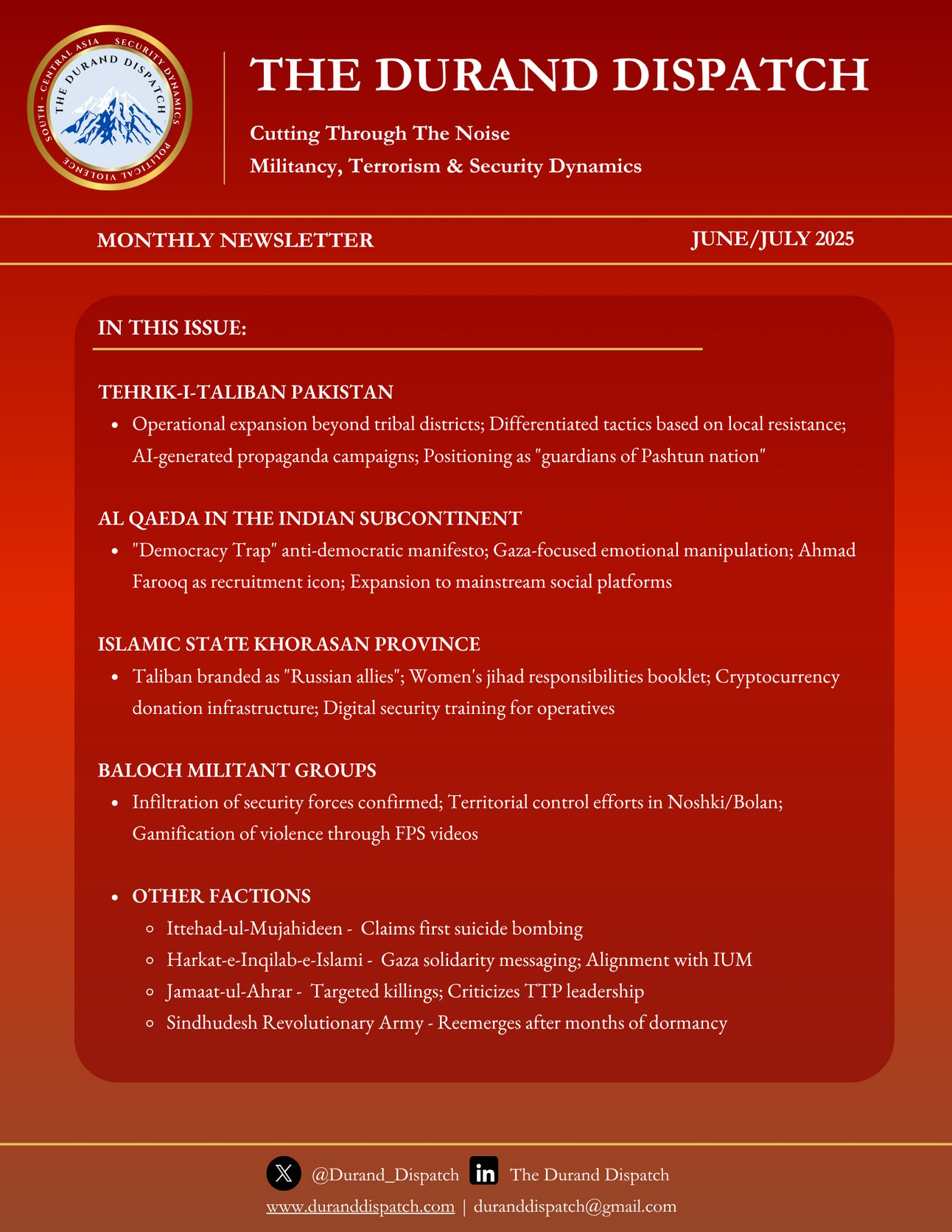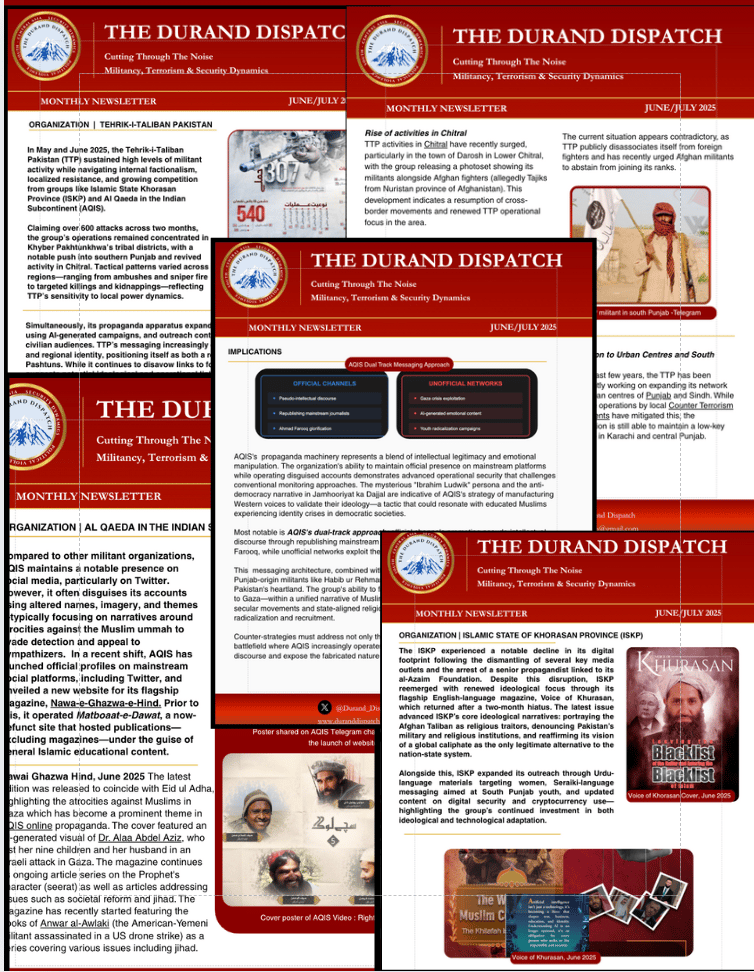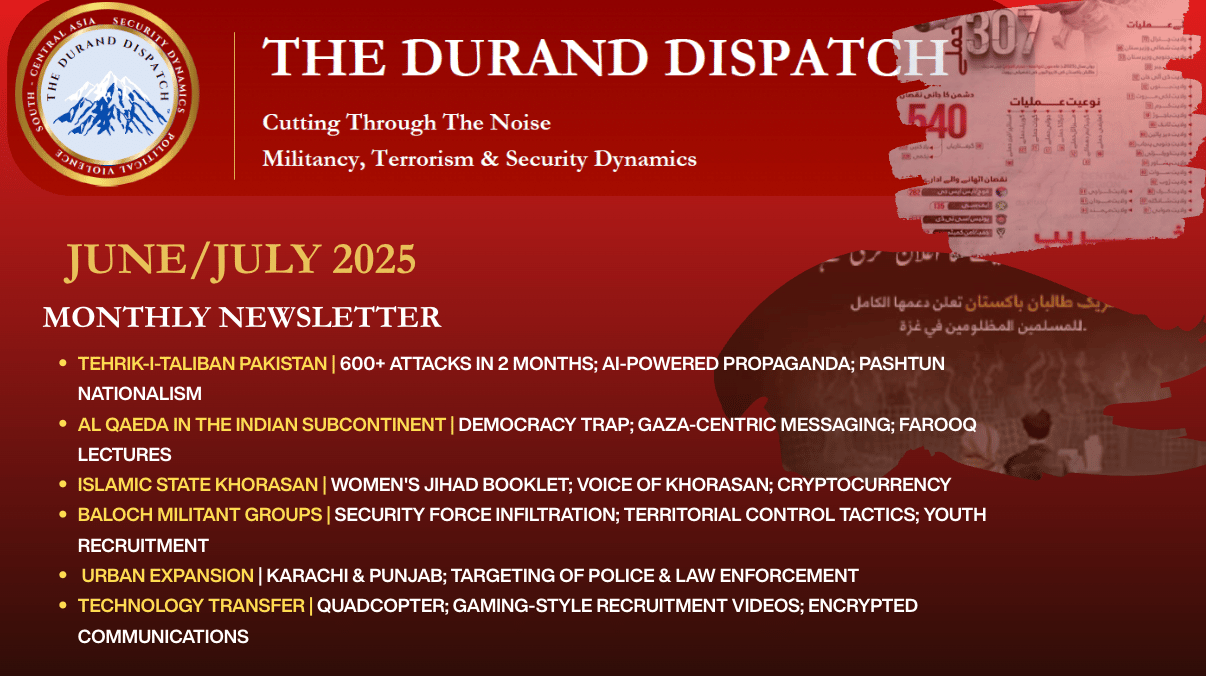



Editor’s Note
Welcome to the June–July issue of Durand Dispatch: Strategic Messaging, our monthly briefing that examines how non-state actors across the Afghanistan–Pakistan region shape perception, frame legitimacy, and assert influence through media and narrative. This newsletter complements our sister publication, Durand Dispatch: Perspectives, which covers broader political and security developments across the region. Together, the two provide a fuller understanding of how strategic messaging intersects with on-the-ground dynamics.
This issue highlights a range of developments—from Tehrik-i-Taliban Pakistan’s expanding digital ecosystem, to gender-focused outreach by the Islamic State Khorasan Province, and the cultural framing used by Baloch separatist groups. Whether through AI-generated propaganda, emotional appeals to tribal identity, or ideological texts for urban audiences, these actors continue to adapt their messaging to reflect local conditions and strategic goals.
Tehrik-i-Taliban Pakistan (TTP): Narrative as Tactic
TTP claimed over 600 attacks across May and June, while deepening its footprint in Chitral and southern Punjab. Under the media leadership of Muneeb Jutt, a former Al-Qaeda propagandist, the group has invested heavily in daily publications, social media engagement, and visuals that emphasize both religious and ethnic narratives. Messaging is tailored: in areas of resistance, the group employs intimidation and targeted killings; in areas of influence, it promotes conditional mercy and community outreach—framing itself as a defender of tribal honor.
Islamic State Khorasan Province (ISKP): Gendered and Digital Strategy
ISKP resumed publication of Voice of Khurasan and continued its critique of the Afghan Taliban and regional states. It also released a detailed Urdu-language booklet outlining ten responsibilities for women in support of the caliphate—ranging from child indoctrination to basic medical and operational training. The group’s content increasingly merges ideological clarity with digital tools, including AI tutorials and cryptocurrency guidance.
Al Qaeda in the Indian Subcontinent (AQIS): Religious Authority Meets Media Sophistication
AQIS continues to position itself as an ideologically rooted alternative through its Nawa-e-Ghazwa-e-Hind platform and publications such as Jamhooriyat ka Dajjal (The Democracy Trap), targeting educated urban readers. Its messaging blends doctrinal content with commentary on Kashmir, Gaza, and Balochistan—while drawing from both traditional Islamic figures and contemporary Urdu media voices.
Baloch Militant Groups: Cultural Grounding and Tactical Adaptation
Baloch separatist outfits, particularly the Baloch Liberation Army (BLA) and Baloch Liberation Front (BLF), are refining their narratives to emphasize honor, dignity, and female resistance. Tributes to educated and female fighters are now routine, as are visuals of temporary checkpoints and community engagement. These groups are actively situating their struggle within cultural frameworks that resonate with local populations.
Emerging and Peripheral Actors: Visibility through Messaging
Newer groups like Ittehad-ul-Mujahideen Pakistan (IUM) and Harkat-e-Inqilab-e-Islami (HII) are increasing their media presence through Eid messages, claims of drone use, and solidarity posts. Jamaat-ul-Ahrar (JuA), meanwhile, is resurfacing with urban targeting and renewed criticism of TTP leadership, indicating internal factional dynamics and ideological repositioning.
Gender as a Cross-Cutting Theme
This cycle reveals consistent attention to women across ideological spectrums. ISKP provides operational guidelines; TTP integrates women and orphans into narratives of social support; and Baloch groups celebrate women as symbols of collective struggle. These messages serve both outreach and internal morale functions.
Framing the Information Space
Across these varied cases, it is clear that propaganda remains a strategic pillar for militant groups—not only to recruit or justify violence, but to define identity, shape community loyalties, and respond to political developments. Strategic Messaging continues to document these patterns, while Durand Dispatch: Perspectives situates them within the wider regional and policy context.
Subscribe to our premium Strategic Messaging content to read the full briefing:
---------------------------------------------------------------------
UpgradeGain access to:
- In-depth Monthly Analyses - Detailed breakdowns of militant propaganda and narrative trends across South and Central Asia.
- Exclusive Visual Summaries - Infographics and dashboards that translate complex messaging into clear, actionable insights.
- Implications & Overlaps - Analysis that connects dots across groups, platforms, and regions—showing how narratives converge or diverge.
- Archival Access - A searchable library of past issues and visual summaries, available only to subscribers.




